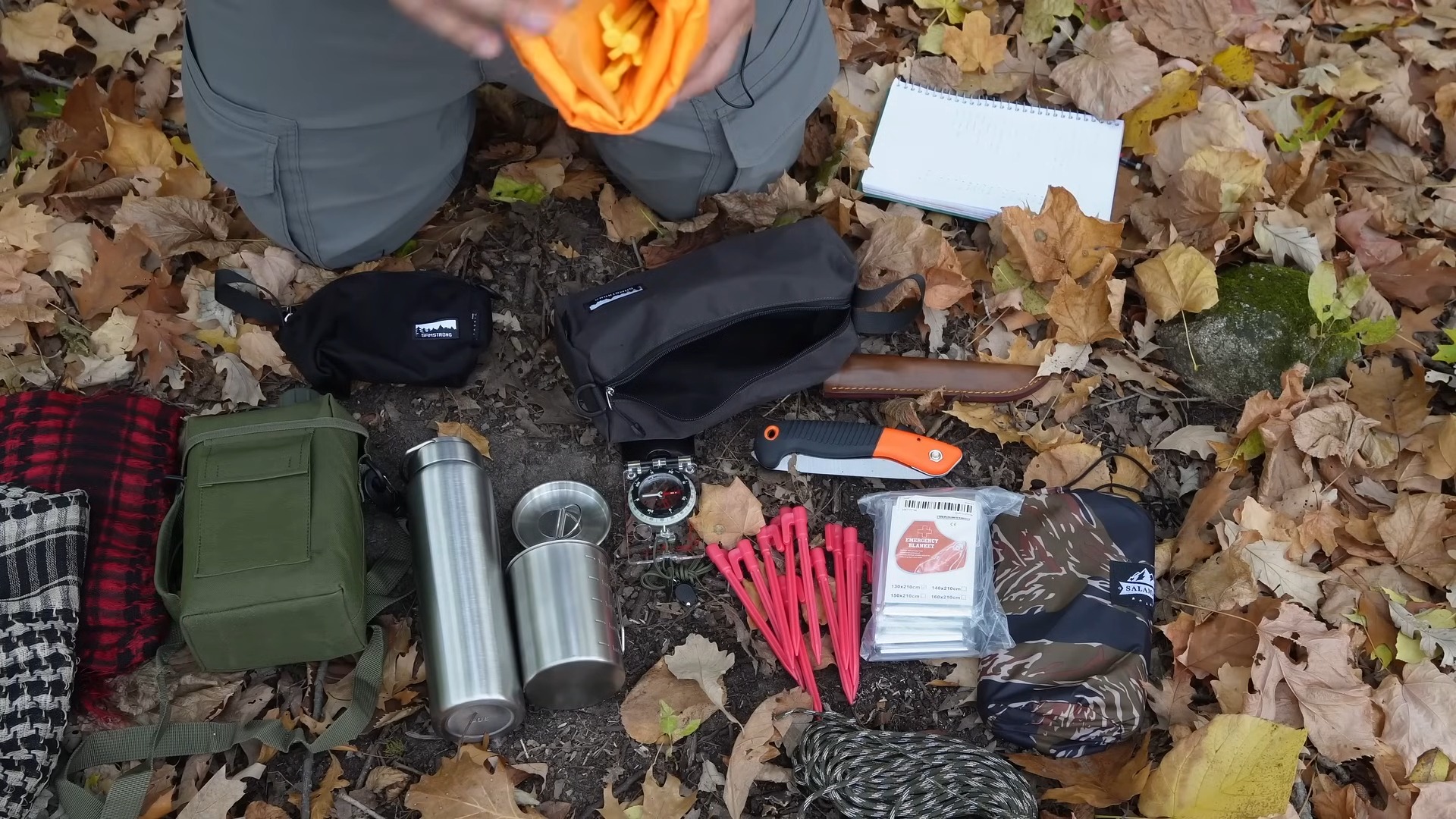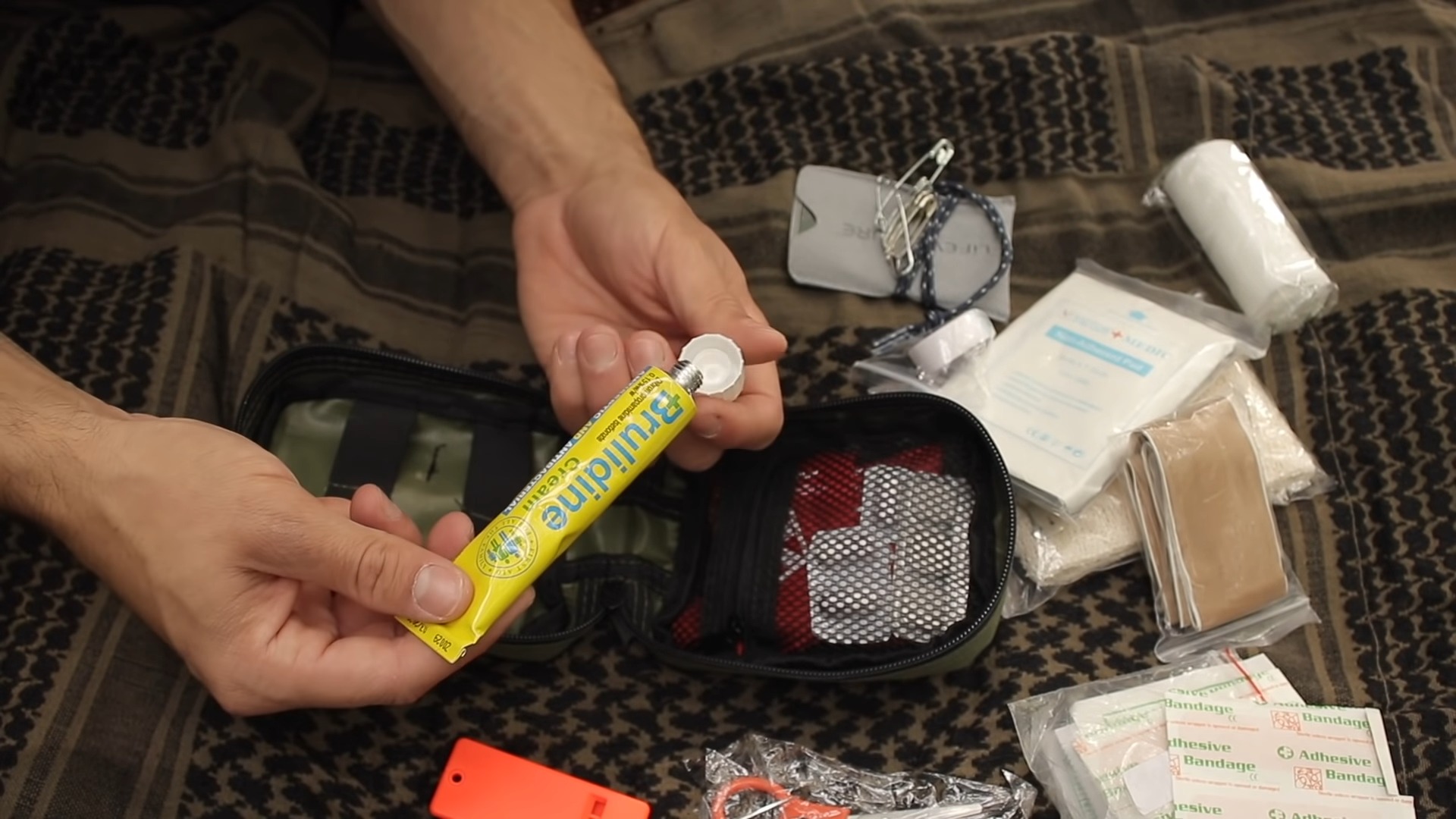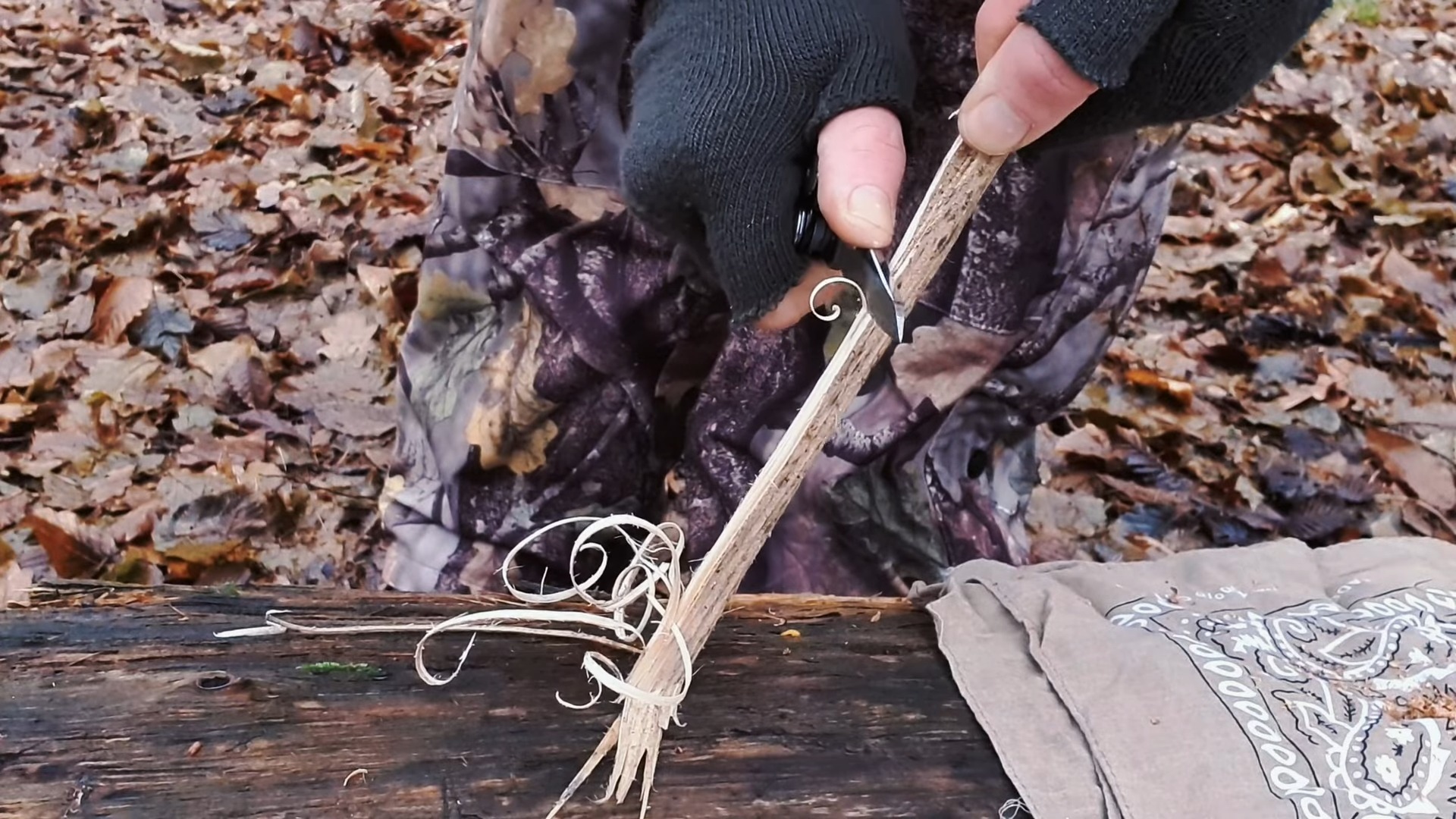Building a survival kit is about ensuring that, regardless of the situation, you have the tools and supplies necessary to stay safe, healthy, and capable of finding or signaling for help.
Thanks to my experiences in varied and often unforgiving environments, I’ve come to understand the fine line between having just enough and being woefully unprepared. I’ve learned that each item must earn its place through utility, reliability, and versatility.
From the damp undergrowth of the Pacific Northwest to the arid expanse of the Mojave Desert, my survival kits have been both my lifeline and my traveling companion.
In this guide, I’ll walk you through the essential components your survival kit should have, broken down into clear categories.
Core Elements of Your Survival Kit

The kit should be portable, durable, and tailored to the environment you expect to encounter.
A well-packed survival kit isn’t just a collection of items like survival multi-tools, and hunting knives but a repository of well-thought-out essentials that could mean the difference between life and death in extreme scenarios.
The Significance of Weight and Size
The size and weight of your survival kit play a pivotal role in mobility. A kit that is too bulky may become a burden, especially if you need to travel by foot over long distances. The trick is to strike a balance – packing enough to be prepared without overloading.
Choose lightweight, multi-use items where possible and opt for compact versions of larger items.
Customization Based on Environment
Adapt your survival kit to the environment you’ll be in. Desert survival requires different gear compared to a mountainous trek. Consider factors like climate, wildlife, and the availability of water when selecting your kit contents.
For instance, a desert kit should prioritize hydration and sun protection, whereas a kit for colder climates should focus on heat retention and weather-proofing.
Regular Review and Maintenance

Your survival kit isn’t static; it should be reviewed and updated regularly. Check expiration dates on food and medical supplies, replace used items, and consider any new needs based on changing circumstances or knowledge.
A well-maintained kit is as important as having one in the first place.
Essential Gear for Survival
The right gear can empower you to face a wide range of unexpected scenarios. From tools that assist in building shelters to those that help you navigate unfamiliar terrain, each piece of equipment has its place in your survival arsenal.
1. Cutting and Chopping Tools

- Knife: A fixed-blade knife is preferable for its durability and varied uses, from preparing food to making kindling.
- Multi-tool: Opt for a quality multi-tool with functions that include cutting, gripping, and screwing, for versatility without the bulk.
- Ax or Hatchet: For longer excursions or in wooded environments, a compact ax or hatchet can be invaluable for cutting wood for fires and shelters.
2. Fire Starting Components
- Matches: Waterproof, strike-anywhere matches ensure you can start a fire in wet conditions.
- Lighter: A reliable windproof lighter can save time and energy.
- Firesteel: It works when wet and lasts longer than traditional fire-starters, providing sparks to ignite tinder.
3. Shelter and Bedding
- Tarp: A heavy-duty tarp with grommets can serve as a makeshift shelter or ground cover.
- Sleeping Bag: Choose a lightweight, season-appropriate sleeping bag that can be compressed into a small pack.
- Space Blanket: These compact, reflective blankets can retain body heat and are essential in cold-weather survival situations.
4. Navigational Aids and Communication Devices

In an emergency, knowing your location and being able to communicate can drastically increase your chances of rescue. Here’s what to include for guidance and signaling.
Maps and Compass
A topographical map of the region you’re in paired with a reliable compass can help you navigate through unfamiliar territory. Ensure you know how to use them together — it’s a skill that could save your life.
GPS and Satellite Phones
GPS Device: A portable GPS device can pinpoint your location and help plot a course to safety.
- Satellite Phone: In areas without cell service, a satellite phone becomes crucial for making distress calls.
- Signal Flare: A flare can be seen from great distances, attracting the attention of rescuers.
- Whistle: A loud whistle is a non-tech, fail-safe way to signal for help and can be heard over long distances.
5. Medical Supplies for Injury and Illness
Your kit should include basic first aid items: adhesive bandages of various sizes, gauze pads, adhesive tape, antiseptic wipes, tweezers, scissors, and pain relievers. These can handle many minor injuries.
Specialized Medical Equipment
Depending on your medical knowledge, consider including items such as a suture kit, tourniquet, or splinting materials. Training in how to use these can significantly expand your ability to manage injuries.
Include a supply of personal prescription medications with a long shelf-life, if possible. Additionally, pack antihistamines for allergic reactions, and consider an epinephrine injector if you have known severe allergies.
6. Sustenance: Food and Water Essentials
Surviving means staying hydrated and energized. The human body can last weeks without food but only days without water, making hydration a top priority.
- Water Filter: A portable water filter can remove pathogens and particulates from natural water sources.
- Purification Tablets: As a backup, water purification tablets can treat water when a filter isn’t available.
- Energy Bars: High-calorie energy bars can provide necessary nutrients and energy in a compact form.
- Dried Meats and Fruits: These lightweight options have a long shelf-life and can provide a quick energy boost.
In some cases, you might find your food in the wild, but regardless, you should always be prepared and have these items in your survival kit.
Utensils and Cookware
- Collapsible Bowl/Cup: These save space and can be used for both eating and drinking.
- Portable Stove: A compact, lightweight stove can be critical for cooking and boiling water in areas where open fires are not viable.
7. Clothing and Personal Items
The clothing in your survival kit should provide protection from the elements and can also serve additional functions. Pack clothing that can be layered to adjust to temperature changes.
Include moisture-wicking underlayers, an insulating mid-layer, and a waterproof outer layer.
Personal Hygiene
- Soap: Biodegradable soap is best for maintaining personal hygiene without harming the environment.
- Toothbrush and Paste: Small travel-sized versions will keep your pack light.
- Sunscreen and Insect Repellent: Protection against the sun and insects can prevent complications like sunburn and disease-carrying bites.
Keeping Your Gear Ready

Having your kit assembled is just the beginning. Keeping it ready for the moment you need it is an ongoing process. Inspect your kit regularly. Check for any wear and tear on items, test functionality, and replace anything that’s outdated or damaged.
Pay special attention to the condition of your tools and medical supplies. Adjust your kit as the seasons change. Your clothing needs will differ from summer to winter, and the amount of daylight will affect your lighting needs.
Tailor your kit to be seasonally appropriate.
FAQs
How can I test the effectiveness of my survival kit without being in an actual survival situation?
Conduct regular “dry runs” or practice scenarios to test your kit’s effectiveness. Spend a night in a controlled outdoor environment using only the items from your kit. This experience will highlight any deficiencies and help you familiarize yourself with the gear, ensuring you know how to use each item when it counts.
Is it practical to have different survival kits for different family members, or should we have one large shared kit?
It’s practical and often recommended to tailor individual kits to each family member while also having a larger, shared kit for communal items like a tent or cookware. Personal kits should include items like clothing, personal medications, and individual water bottles, ensuring that each person’s specific needs are met.
How do I balance the quantity of food and water I include in my kit against the weight limitations?
Opt for calorie-dense, lightweight food items like energy bars and vacuum-sealed meals. For water, carry a portable filter and purification tablets to make use of natural water sources, thus reducing the amount of water you need to carry.
Can I include technology-dependent items in my survival kit, or should I stick to non-tech gear?
While it’s wise to include non-tech items that won’t fail in a no-power scenario, tech items like a GPS device can be invaluable, provided you have a means to power them, such as solar chargers or backup batteries.
How should I store my survival kit to ensure that it’s readily accessible when needed?
Store your kit in a dry, easily accessible place, known to all family members or companions. Consider a location near an exit point of your home or in your vehicle if you travel frequently.
Regular checks should be scheduled to ensure the kit remains in an optimal state.
Beyond the basic items, what are some less common but highly useful items to include in a survival kit?
Items like a signaling mirror, duct tape, fishing gear, or a hand-cranked radio can be incredibly useful and often overlooked.
Signaling mirrors can be used for long-distance visual signaling, duct tape for repairs, fishing gear for acquiring food, and a hand-cranked radio for receiving weather and emergency broadcasts without relying on batteries.
Summary
In conclusion, a survival kit should be seen as a dynamic resource, evolving with your skills, experiences, and the environments you explore. With each adventure, my kit evolves, as do I.
It stands ready, much like I must always be, for the next challenge, the next unexpected turn, and the next opportunity to prove that with the right preparation, humans are capable of thriving even in the most daunting situations.
With this guide, you’re equipped to assemble a robust survival kit tailored to meet any challenge nature throws your way.
My name is Casey Harper, and I specialize in wilderness survival, navigation, and first aid. With over 12 years of experience as a wilderness survival instructor, I have had the privilege of guiding individuals and groups through challenging outdoor environments, ensuring their safety and teaching them essential survival skills. Additionally, I contribute to GearDisciple by writing insightful articles on survival strategies and reviewing outdoor gear. Through sharing my knowledge and experience, I aim to equip others with the skills and tools necessary for thriving in the wild, embracing the beauty and challenges it presents.